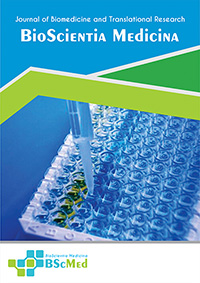Main Article Content
Abstract
Background: The management of pulmonary tuberculosis (TB) is frequently complicated by adverse drug reactions, with drug-induced liver injury (DILI) being one of the most severe. The clinical challenge is significantly amplified in patients with underlying metabolic disorders such as prediabetes, which can impair immune responses and affect treatment outcomes. This report details the complex management of a geriatric patient presenting with this therapeutic triad.
Case presentation: A 67-year-old male with newly diagnosed, drug-sensitive pulmonary tuberculosis developed severe hepatotoxicity ten days after initiating standard first-line anti-tuberculosis therapy. Clinical presentation included jaundice, nausea, and vomiting, with laboratory findings showing a severe hepatocellular injury pattern (SGOT 204 U/L, SGPT 126 U/L) and hyperbilirubinemia (Total Bilirubin 2.6 mg/dL). Concurrently, he was diagnosed with prediabetes (HbA1c 5.9%) and was suffering from severe malnutrition (BMI 15.6 kg/m²). The offending drugs were immediately withdrawn, and supportive therapy was initiated. Following normalization of liver function, a modified anti-tuberculosis regimen was cautiously reintroduced using a stepwise re-challenge protocol that entirely omitted pyrazinamide.
Conclusion: The patient was successfully managed with a modified nine-month regimen of isoniazid, rifampicin, and ethambutol, achieving clinical and biochemical stability without recurrence of liver injury. This case highlights that a meticulous, stepwise approach—involving prompt drug withdrawal, supportive care, and a tailored re-challenge protocol—can lead to successful TB treatment outcomes without recurrence of DILI, even in a patient with multiple converging high-risk factors.
Keywords
Article Details
As our aim is to disseminate original research article, hence the publishing right is a necessary one. The publishing right is needed in order to reach the agreement between the author and publisher. As the journal is fully open access, the authors will sign an exclusive license agreement.
The authors have the right to:
- Share their article in the same ways permitted to third parties under the relevant user license.
- Retain copyright, patent, trademark and other intellectual property rights including research data.
- Proper attribution and credit for the published work.
For the open access article, the publisher is granted to the following right.
- The non-exclusive right to publish the article and grant right to others.
- For the published article, the publisher applied for the Creative Commons Attribution-NonCommercial-ShareAlike 4.0 International License.





